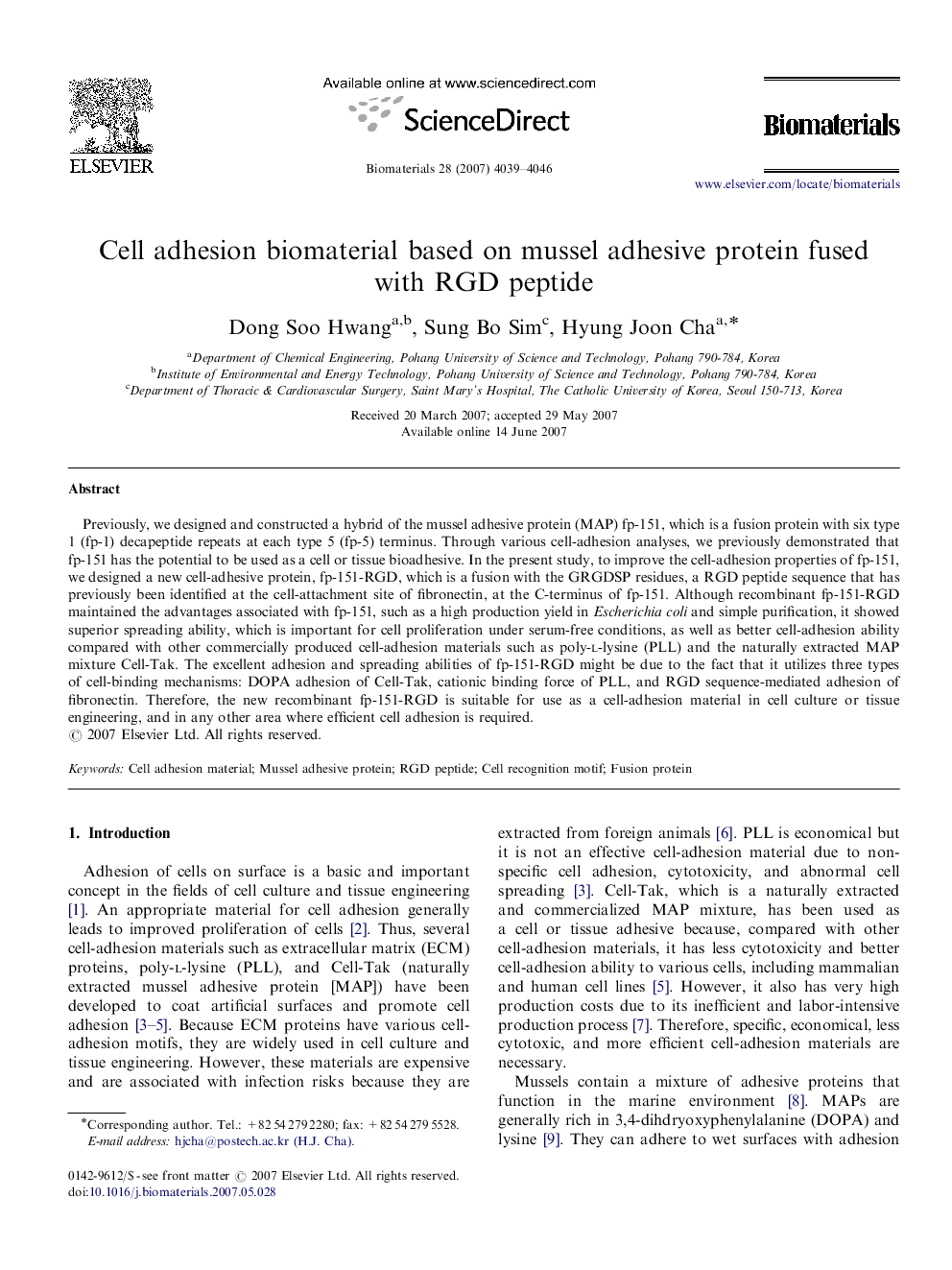| کد مقاله | کد نشریه | سال انتشار | مقاله انگلیسی | نسخه تمام متن |
|---|---|---|---|---|
| 11022 | 713 | 2007 | 8 صفحه PDF | دانلود رایگان |

Previously, we designed and constructed a hybrid of the mussel adhesive protein (MAP) fp-151, which is a fusion protein with six type 1 (fp-1) decapeptide repeats at each type 5 (fp-5) terminus. Through various cell-adhesion analyses, we previously demonstrated that fp-151 has the potential to be used as a cell or tissue bioadhesive. In the present study, to improve the cell-adhesion properties of fp-151, we designed a new cell-adhesive protein, fp-151-RGD, which is a fusion with the GRGDSP residues, a RGD peptide sequence that has previously been identified at the cell-attachment site of fibronectin, at the C-terminus of fp-151. Although recombinant fp-151-RGD maintained the advantages associated with fp-151, such as a high production yield in Escherichia coli and simple purification, it showed superior spreading ability, which is important for cell proliferation under serum-free conditions, as well as better cell-adhesion ability compared with other commercially produced cell-adhesion materials such as poly-l-lysine (PLL) and the naturally extracted MAP mixture Cell-Tak. The excellent adhesion and spreading abilities of fp-151-RGD might be due to the fact that it utilizes three types of cell-binding mechanisms: DOPA adhesion of Cell-Tak, cationic binding force of PLL, and RGD sequence-mediated adhesion of fibronectin. Therefore, the new recombinant fp-151-RGD is suitable for use as a cell-adhesion material in cell culture or tissue engineering, and in any other area where efficient cell adhesion is required.
Journal: Biomaterials - Volume 28, Issue 28, October 2007, Pages 4039–4046